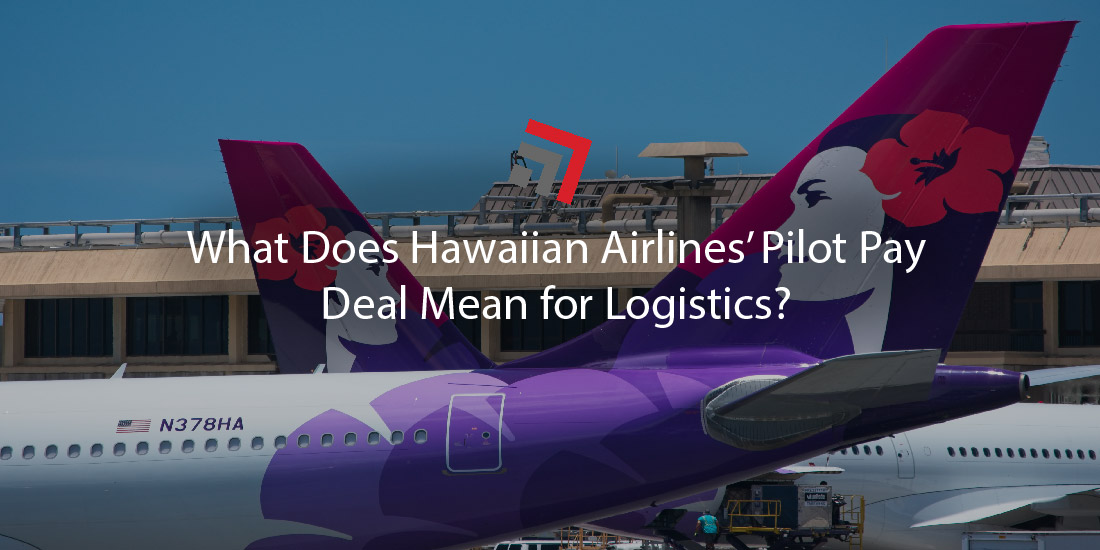Last week, the shaking of hands could now make Hawaiian Airlines’ pilots the highest paid in the cargo industry.
The Air Line Pilots Association, the representative pilot union, reached a tentative labor agreement with the airline on a four-year contract that readies pilot pay for takeoff.
Flying the friendly skies
The terms of this contact include an average 32.9 percent pay increase (over the four-year period), a signing bonus, raises to company retirement contributions, while also granting more scheduling flexibility and addressing quality of life. The perks of this deal apply to all pilots at Hawaiian Airlines’, including its freight division.
Hawaiian Airlines’ some 1,000 pilots are set to vote on the new deal over two weeks, beginning tomorrow. If ratified, the contract will take effect on March 2.
The pay scale will make pilot compensation at the airline highly competitive with not just air freighters but even top passenger lines like Delta and United.
What does this mean for logistics?
While the passenger side of Hawaiian Airlines’ operations may see pilots in better moods ahead of honeymoon flights from the West Coast to Honolulu, the freight side will also be enabled to attract more crew members as the airline sets its sights to expand in the air cargo industry.
The new agreement exceeds the pay levels found at other freighters, like FedEx Express and UPS, and prepares Hawaiian Airlines on its upcoming project of flying planes for Amazon later this year.
Amazon, one of the world’s largest retailers, surely sees advantages with the Honolulu-based carrier upping the ante on pilot pay and benefits. In an industry haunted by pilot scarcity, Hawaiian Airlines’ fleets are expected to have strong labor stability after this new contract.
While higher expenses will incur from it, the fruits of the labor will likely lead to faster and more reliable deliveries for Amazon—the retailer’s bread and butter bottom line.
An investment in delivery reliability
It’s pretty clear that Amazon’s retail success can be attributed to its long-held presence on the online marketplace. Otherwise known as ecommerce, Amazon has been the main beneficiary of the demand boom this market experienced early pandemic.
With ecommerce sales still soaring, the retail giant is eager to expand the reach of its delivery network and boost shipping capacity to move customer packages. A dependable fleet will expedite the process of getting product from warehouse shelves to their customers’ doorsteps.
For the millions of us who have made an ecommerce transaction, we are all aware of Amazon’s guile with promising free and fast delivery to customers. While it’s typically an assurance that pull throughs, whenever customer deliveries are botched, it can have a rippling effect on Amazon’s reputation. In other words, customers expect fast and on-time delivery. Anything short of that could be seen as a negative experience.
Final Thoughts
Amazon’s deal with Hawaiian Airlines hopes to bring further reliability to the retailer’s logistics, however it’s not the only leg of transport in need of constant improvement.
Last-mile delivery, the final leg of the shipping journey, is where most blunders occur. For a closer look at last-mile delivery and how it’s a costly dealbreaker for retailers, please read our blog.
Contact our team if you have any questions on this topic or any others in logistics.



Recent Comments